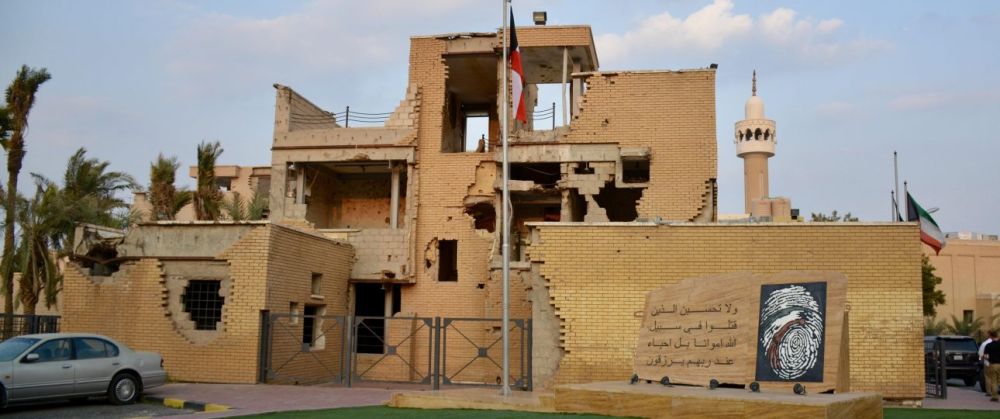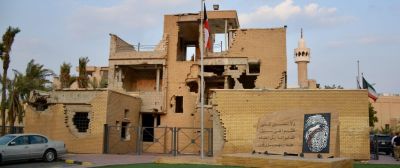

The Qurain Martyrs' Museum provides a significant opportunity to learn about Kuwait's history, particularly during the Iraqi invasion of 1990. The Guided Historical Tour takes visitors through a poignant journey, where they can immerse themselves in the stories of bravery and sacrifice displayed by the Kuwaiti resistance fighters known as the Al-Messilah group. Visitors will see various exhibits, including personal belongings of the martyrs, artifacts from the period, and informative displays that together create a powerful narrative of the historic event. The tour typically lasts for a duration of 45 minutes to an hour. This time allows for a detailed explanation of the events and offers visitors moments of reflection as they walk through the halls that have been preserved in memory of those who gave their lives.
As part of the educational experience at the Qurain Martyrs' Museum, visitors can attend a documentary screening that recounts the tragic events of the 1990 Iraqi invasion and the valiant efforts of the resistance fighters. The documentary is a moving tribute with actual footage and interviews with survivors that not only pays homage to the fallen but also educates the current generation about the sacrifices made for the nation's freedom. The screening room is designed to evoke the atmosphere of the time and provides a solemn environment for visitors to better understand the gravity of the events discussed. The duration of the screening is typically around 30 minutes, after which visitors can engage in a conversation or ask questions to further their knowledge about the historical events depicted.
The Memorial Hall within the Qurain Martyrs' Museum is dedicated to the memory of the individuals who lost their lives during the resistance. Visitors are invited to pay their respects and view the photographs, names, and stories of the martyrs displayed in chronological order. The hall has been carefully designed to invoke a sense of solemnity and reverence for these heroes. The walls narrate the tales of courage and sacrifice that emanated from a dark chapter in Kuwait's history. Visitors typically spend approximately 20 to 30 minutes in the Memorial Hall, silently reflecting on the cost of freedom and the importance of remembering the martyrs who fought for their country with unyielded determination.
The Artifacts Exploration activity at the Qurain Martyrs' Museum allows visitors to examine the various objects and remnants from the time of the invasion that have been carefully preserved. These artifacts include personal items from the martyrs, remnants of weapons, and household objects that bear the scars of war. The exploration gives a tangible connection to the past, making the history come alive in a way that is both educational and deeply moving. The museum has curated these items to provide insight into the lived experiences of individuals during the conflict. Visitors typically spend around 30 minutes or more in this section, depending on their level of interest in the historical artifacts on display.
The museum also offers educational workshops for students and visitors, designed to inspire and inform participants about the values of patriotism and sacrifice. These workshops provide an interactive way to learn about the history of Kuwait through engaging activities and discussions. They are led by knowledgeable educators who provide comprehensive materials and lead activities that stimulate critical thinking and reflection on the importance of national history. The workshops can vary in duration, typically lasting from 1 to 2 hours, and are often structured to meet the educational needs of different age groups, ensuring an enriching experience for all attendees.
Occasionally, the museum hosts sessions where visitors can hear personal accounts from individuals who lived through the invasion and can share their experiences first-hand. These sessions are profound, allowing for an intimate understanding of the impact of the conflict on ordinary lives. Survivors share their tales of resilience, which not only serves as a testament to their strength but also encourages a deeper appreciation of the freedom and peace that exists today. Such sessions can be both somber and uplifting and usually last about 1 hour. The intimate setting and the gravity of the personal stories make for a memorable and moving experience for all who attend.
To engage visitors of all ages, the Qurain Martyrs' Museum features interactive exhibits that use technology to bring history to life. Through touch screens, virtual reality, and other multimedia installations, visitors can delve deeper into various aspects of the 1990 invasion, learning about battle strategies, the experiences of the citizens, and the international community's response to the crisis. Participating in these interactive exhibits can take from 30 minutes to an hour, depending on one's pace. The engaging nature of these displays makes them particularly popular with younger visitors and helps to ensure the lessons of the past are not only learned but also remembered.
Outside the museum, visitors are encouraged to take a reflective walk through the Peace Garden. This dedicated space is filled with plants that blossom in Kuwait's harsh climate, symbolizing the resilience and growth of the nation post-invasion. There are also several memorials and sculptures dotted throughout the garden that pay tribute to the martyrs. The walk is meant to be contemplative and can be a personal journey for each visitor, with many spending about 15 to 30 minutes strolling through the serene surroundings and reading the inscriptions that narrate stories of hope and rebuilding.
One of the key features of the museum is the detailed timeline wall that outlines the events leading up to, during, and after the Iraqi invasion. This comprehensive chronology provides context and clarity into how the conflict unfolded and its subsequent impact. This self-guided activity can be done at the visitor's own pace, typically requiring 20 to 30 minutes to absorb the full extent of the detailed historical information presented. It's an essential part of the visit for anyone looking to understand the sequence of events and the interplay of international dynamics at the time.
The museum is also home to a children's educational area, which is aimed at teaching young visitors about the importance of history and remembrance through age-appropriate materials and activities. The engaging and interactive space allows children to play and learn simultaneously, with visual aids and simple narratives that impart valuable lessons in a manner that is accessible and understandable for the younger audience. The duration of a visit to this area can range from 30 minutes to 1 hour, depending on the children’s engagement and the activities scheduled for the day.
